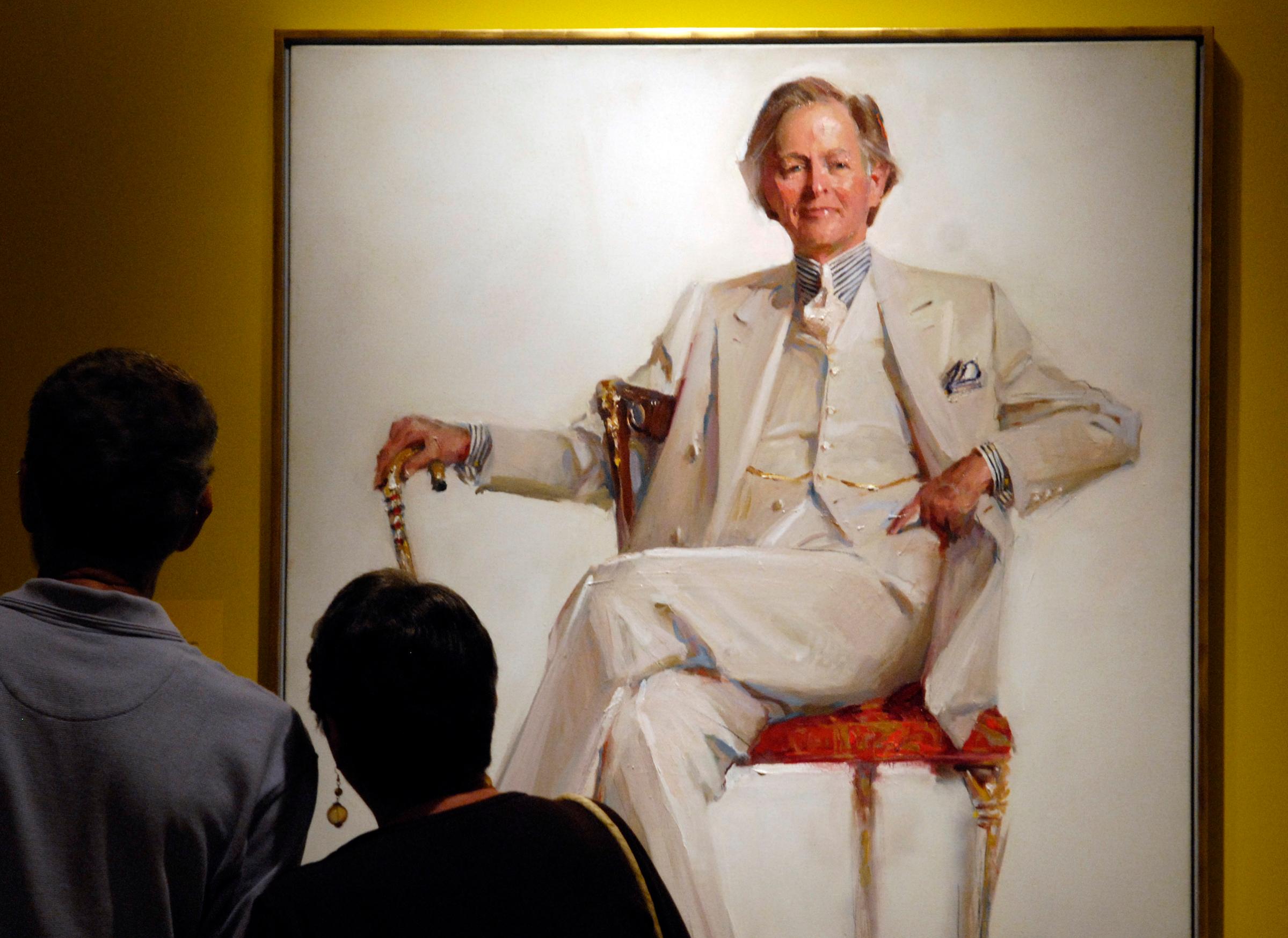The novelist and journalist Tom Wolfe, who died on Monday at age 88, will be remembered for his impact on the development of the New Journalism, his inimitable — though oft-imitated — writing style and his incisive ability to define the culture he observed. But the author of such classics as The Right Stuff and The Bonfire of the Vanities will be remembered for something else, too: his suit.
For decades, Wolfe had been known for wearing an outfit TIME once described as “a trademark white suit and vest, a high-necked blue-and-white-striped shirt complemented by a creamy silk necktie.” He might be caught in other outfits — a tux or summer seersucker, or the blue blazer with which he flew under the radar while touring colleges to collect material for his 2004 novel I Am Charlotte Simmons — but the white suit was essential.
He’s wearing the white suit in his portrait at the National Portrait Gallery, and he’s doubtless wearing the white suit in any fan’s mental picture of him.

And, as it turns out, the story behind the white suit is essential Wolfe too. In a 1989 Q&A with TIME’s Bonnie Angelo, Wolfe explained how the look came about:
Q. In your books you pay meticulous attention to what people wear, as signals of status.
A. Clothing is a wonderful doorway that most easily leads you to the heart of an individual; it’s the way they reveal themselves.
Q. Some critics say you judge a man by the shoes he wears.
A. I take some solace in knowing that Balzac was criticized the same way — he was obsessed with furniture. Details are of no use unless they lead you to an understanding of the heart. It’s no mystery; it has to do with the whole subject of status.
Q. What would you say about a character who wears a handsomely cut vanilla-colored suit on a winter day in New York, with a lilac tie and matching striped shirt with a collar seven stripes high, and shoes custom-designed to appear to have white spats?
A. I was afraid you might mention that. I suppose I might say, “Here’s somebody who’s trying to call attention to himself.” But I leave that to others to interpret. It’s always hard to describe yourself.
Q. Does it bother you to be called a “dandy”?
A. Not at all. Writers, whether they want to admit it or not, are in the business of calling attention to themselves. My own taste is counter-bohemian. My white suits came about by accident. I had a white suit made that was too hot for summer, so I wore it in December. I found that it really irritated people — I had hit upon this harmless form of aggression!
His happy attitude toward being associated with his clothing continued throughout his life.
In 2008, in a Q&A with TIME readers, the writer — who also described window shopping as his primary hobby — took a query about whether he ever got tired for being known for the way he dressed. Quite to the contrary, he answered. “It has done me so much good. Not long after I published my first book, I quickly found I was terrible at being interviewed,” he said. “But then I’d read the piece and it would say, ‘What an interesting man; he wears white suits.’ And so it was a good 10 years where the suits were a substitute for a personality.”
Although few today would remember Wolfe as a man without a personality, his observation still holds true: those who write about him cannot resist mentioning the white suits. That he was interesting, however, can be attributed to much more than his fashion sense.
More Must-Reads from TIME
- Donald Trump Is TIME's 2024 Person of the Year
- Why We Chose Trump as Person of the Year
- Is Intermittent Fasting Good or Bad for You?
- The 100 Must-Read Books of 2024
- The 20 Best Christmas TV Episodes
- Column: If Optimism Feels Ridiculous Now, Try Hope
- The Future of Climate Action Is Trade Policy
- Merle Bombardieri Is Helping People Make the Baby Decision
Write to Lily Rothman at lily.rothman@time.com